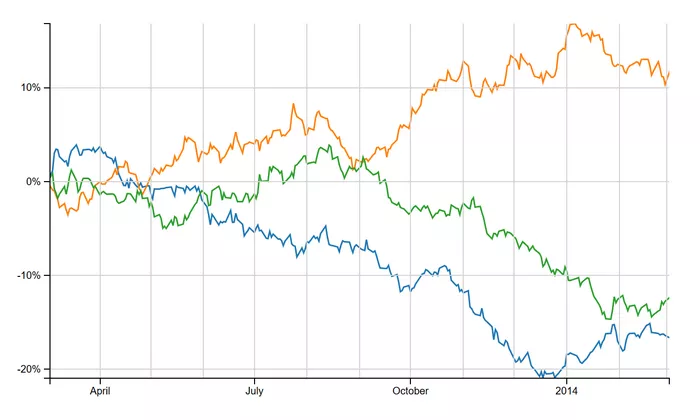Oil Market Overview
The oil market began the week on a weak note. A briefing from China over the weekend did not present any new measures to support the country’s struggling oil demand. However, rising tensions in the Middle East prompted speculators to increase long positions in ICE Brent crude oil.
Speculative Activity in Crude Oil
ICE Brent and NYMEX WTI prices opened lower this morning, with both falling by over 1%. This decline followed China’s failure to announce new incentives aimed at boosting consumption. In response to the escalating conflict in the Middle East, hedge funds quickly exited bearish positions in ICE Brent, marking the fastest pace of selling in nearly eight years.
Recent positioning data reveals a significant uptick in speculative buying of ICE Brent. Over the past week, speculators added 123,226 contracts to their net long positions, marking the fourth consecutive week of growth. As of last Tuesday, speculators held a net long position of 165,008 contracts. Meanwhile, money managers cut their gross short positions by 47,977 contracts, bringing their total to 91,222 contracts—the largest drop since December 2016. Gross long positions also surged, increasing by 75,249 contracts to reach 256,230. In contrast, NYMEX WTI saw a reduction in net long positions, decreasing by 3,947 contracts to 137,293 for the week ending October 8, 2024.
Iraq’s state oil company, SOMO, reported a reduction in oil production by 260,000 barrels per day (bpd), bringing September’s output down to 3.94 million bpd. This figure is 60,000 bpd below Iraq’s OPEC+ production quota, as the country seeks to align with efforts to stabilize the global crude oil market. OPEC+ had earlier urged member nations, including Iraq, Kazakhstan, and Russia, to fully implement the production cuts agreed upon at the beginning of the year.
US Drilling Activity Rises
In the United States, drilling activity rebounded last week. Baker Hughes reported a two-rig increase in active US oil rigs, bringing the total to 481—the first rise in four weeks. This increase suggests that shale drilling trends may be stabilizing after a downward trajectory throughout 2024, aided by rising oil and gas prices. The total rig count, which includes both oil and gas rigs, now stands at 586, up from 585 the previous week. Additionally, Primary Vision’s frac spread count, indicating completion activity, rose by five to 241.
Looking ahead, the energy calendar for the week is busy. OPEC is set to release its monthly oil market report tonight, while the International Energy Agency (IEA) will publish its own report tomorrow and its World Energy Outlook the following day. Weekly US inventory reports from the American Petroleum Institute (API) and the Energy Information Administration (EIA) will also be available.
Metals Market Update
In the metals market, prices stabilized following China’s announcement of additional support measures. China’s finance ministry pledged to assist the struggling property market and private companies. However, no new stimulus measures were provided, which investors were hoping for.
Reports suggest that Indonesia may extend copper concentrate exports for Freeport Indonesia and Amman Mineral for one to two additional months. This extension is due to their new smelters not reaching 100% capacity by year-end. The final decision from the government is still pending.
Data from the Shanghai Futures Exchange (SHFE) indicates that weekly inventories for all base metals, except nickel, increased during the reporting period. Copper stocks rose by 14,860 tonnes to reach 156,485 tonnes for the second consecutive week. Lead inventories increased by 9.3% to 44,566 tonnes, while zinc and aluminum saw minor increases of 0.9% and 0.1%, respectively. In contrast, nickel inventories fell by 2% to 24,994 tonnes.
Positioning data from the Commodity Futures Trading Commission (CFTC) revealed that speculators decreased their net long positions in COMEX copper by 3,590 lots, following four weeks of gains, leaving them with 37,537 lots as of October 8, 2024. In precious metals, managed money net longs in COMEX gold dropped by 22,677 lots for the second consecutive week to 226,283 lots. This represents the least bullish position since the week ending August 13, amid uncertainties regarding US interest rate cuts. Similarly, speculators reduced their net longs in silver by 3,635 lots to 34,744 lots as of last Tuesday.
Agriculture Sector Update
In its latest World Agricultural Supply and Demand Estimates (WASDE) report, the USDA raised its corn production estimates by 17 million bushels to 15.203 billion bushels due to improved yields. This revision exceeds the market’s average expectation of 15.173 billion bushels. However, beginning stock estimates were lowered by 52 million bushels to 1.76 billion bushels. Consequently, ending stocks estimates decreased by 58 million bushels to 1.999 billion bushels, also above the average market expectation of 1.988 billion bushels.
On the global front, the USDA anticipates a decline in 2024/25 corn production to 1.2172 million metric tons, down from the previous estimate of 1.2186 million metric tons. Supply losses from Ukraine, Egypt, and Russia will offset production gains from India. The USDA has also reduced ending stock estimates by 1.8 million metric tons to 306.5 million metric tons for the end of 2024/25, slightly below market expectations.
Minimal changes were observed in US soybean forecasts, with production expected to fall by 4 million bushels to 4.582 billion bushels for the end of 2024/25. This projection aligns closely with the market expectation of 4.581 billion bushels. The USDA maintained its US ending stock projections at 550 million bushels, which is higher than market expectations of 546 million bushels.
On the global scale, the USDA slightly increased global soybean inventory estimates from 134.6 million metric tons to 134.7 million metric tons by the end of 2024/25, primarily due to reduced production and consumption. This figure is marginally higher than the average market estimate. However, global soybean production estimates were revised down by about 0.3 million metric tons to 428.9 million metric tons due to supply losses from the US, while global demand fell from 403 million metric tons to 402.7 million metric tons for 2024/25.
The USDA also reduced its 2024/25 US wheat production estimates by 11 million bushels to 1.971 billion bushels. The ending stock estimates for 2024/25 were lowered by 16 million bushels to 812 million bushels due to decreasing supply and beginning stocks. This figure is below the market expectation of 820 million bushels. Globally, the USDA raised wheat inventory estimates from 257.2 million metric tons to 257.7 million metric tons at the end of 2024/25, mainly due to higher stocks at the beginning of the year. This number also exceeds the average market estimates of 255.9 million metric tons. Global wheat production estimates were decreased by around 2.8 million metric tons to 794.1 million metric tons, primarily due to supply losses from Russia, the US, and the EU. Global wheat demand estimates fell from 804.9 million metric tons to 802.5 million metric tons for 2024/25.
Related topics:































